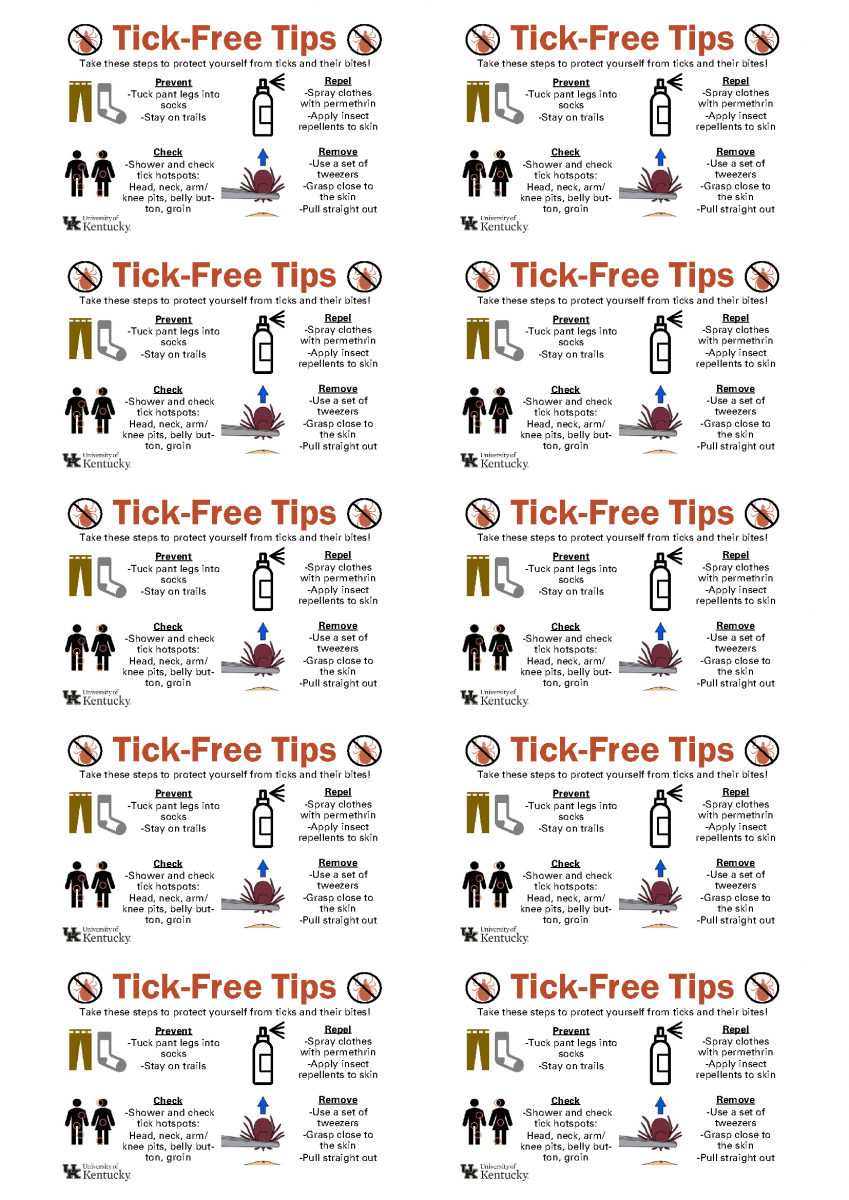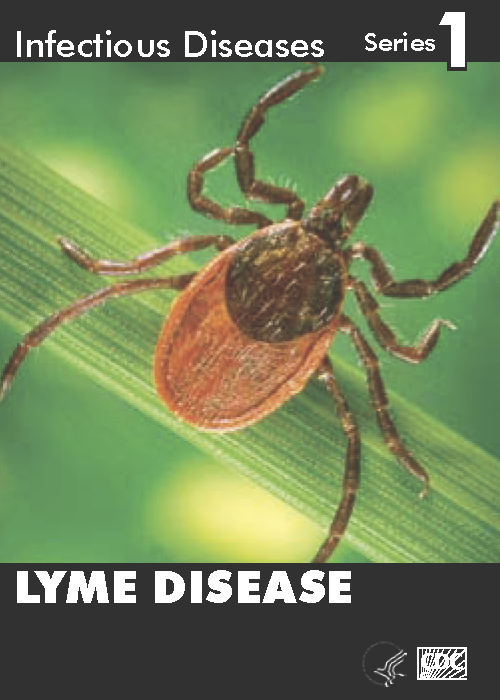The Central Appalachian Regional Education and Research Center (CARERC) Agricultural Safety and Health (ASH) training program aims to provide educational resources, produce leaders and researchers in agricultural safety, and equip students with an in-depth understanding of agricultural health and safety issues. A prominent hazard for agricultural workers is exposure to disease-causing arthropods such as ticks and mosquitoes. In recent years, the incidence of several tickborne illnesses have been increasing, and agricultural workers who spend increased time outdoors or around livestock may be at a greater risk for exposure to these vectors and the diseases they spread. Working with the University of Kentucky Department of Entomology, we are collecting data on the distribution of medically relevant tick species and common tick-borne pathogens like those causing Rocky Mountain spotted fever, ehrlichiosis and Lyme disease in Kentucky to gain a greater understanding of where tick vectors and pathogens are, when ticks are active, and what habitat house more robust tick populations in an effort to promote better control and mitigation strategies.
Ticks of Medical Importance in Agriculture
Ticks are a major outdoor pest in most of the United States, especially in the Southeast. They are parasitic arachnids that survive by attaching and feeding on people and animals and can be of medical concern because they act as vectors of disease. While most tick bites do not usually result in illness, the ones that do can be dangerous and potentially life-threatening. Illness associated with ticks in the Southeast include Spotted fever rickettsioses, ehrlichiosis, anaplasmosis, alpha-gal allergy, and occasionally Lyme disease.
DEER TICKS
Deer ticks (Ixodes scapularis) are active year-round, particularly in forests and where deer populations are known to live. Deer ticks are also sometimes referred to as blacklegged ticks, due to their black legs. Adult males appear entirely black while adult females have a reddish orange underbelly. Nymphal stages are active in the spring and summer months while adults are active through the fall and winter when temperatures are above freezing.
Diseases of concern
-
Lyme disease
-
Anaplasmosis
-
Relapsing fever
-
Canine ehrlichiosis
-
Babesiosis
-
Powassan virus

LONE STAR TICKS
Lone star ticks (Amblyomma americanum) are active in the spring and summer months as adults and nymphs, then as larvae into late fall. Adult females are easily identified by the white dot on their back, while males have smaller white markings on their brown body. All life stages (larvae, nymphs, adults) of this tick are aggressive biters of humans and can be found in large numbers throughout many states of the Southeast.
Diseases of concern
-
Ehrlichiosis
-
Spotted fever rickettsiosis
-
Tularemia
-
Heartland virus
-
Bourbon virus
-
Southern tick-associated rash illness (STARI)
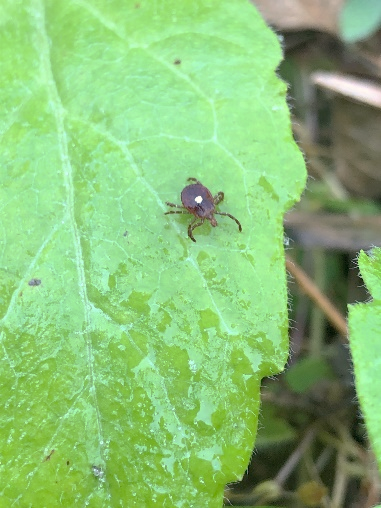
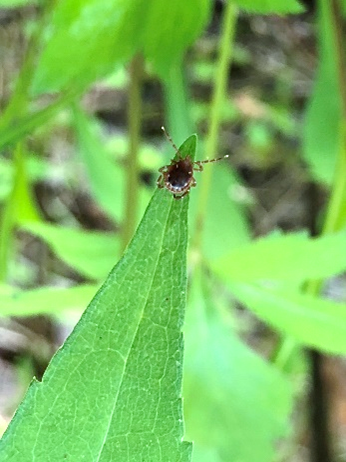
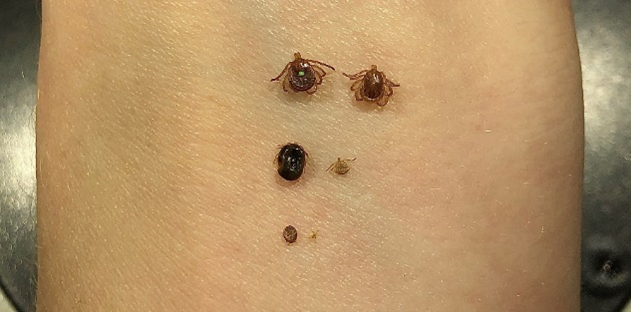
AMERICAN DOG TICKS
American dog ticks (Dermacentor variabilis) are active in the spring and summer months. Adults are the most likely life stage to bite humans and are sometimes larger in size compared to other tick species. These ticks favor areas with tall grass, but may also live in forests or suburban areas.
Diseases of concern
-
Spotted fever rickettsiosis
-
Tularemia
Tick Prevention and Removal
How to Remove a Tick Safely
Step 1: Use fine-tipped tweezers to grasp the tick as close to the skin's surface as possible. the goal is to remove the entire tick including its head and mouth.
Step 2: Pull up with steady, even pressure. do not twist or jerk the tick.
Step 3: Clean the bite area and your hands with rubbing alcohol, an iodine soap, or soap and water.
A feeding tick holds itself in place by barbed mouthparts and a type of glue. Grasp it with fine-point tweezers as close to the skin as possible. Pull it straight out gently but firmly. Do not twist or jerk the tick during removal. Afterward, wash the bite area and your hands thoroughly with soap and water and apply an antiseptic to the bite site. You can store removed ticks in a sealed plastic bag with the date and location noted. Identification of ticks is available through your local Cooperative Extension Service office. Anyone with concerns about exposure to ticks and possible disease transmission should consult their physician to determine the best course of action. Most tick-borne diseases can be averted by early intervention with an antibiotic.
Resources for Download
Alpha, Rocky, Tips
Bedbug,mosquito,cockroach
Lime and WestNile
VectorBorneDisease 2022
Asian Longhorned Tick and Black Widow Spider

